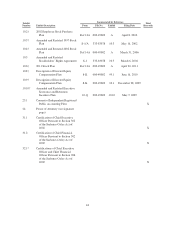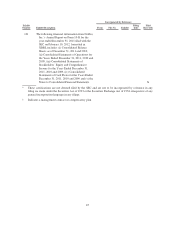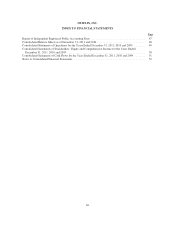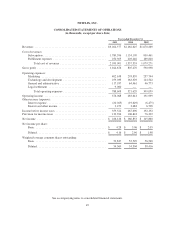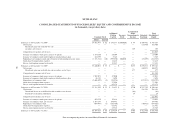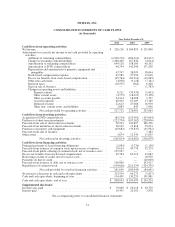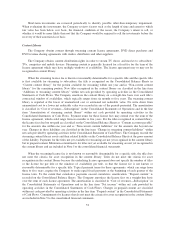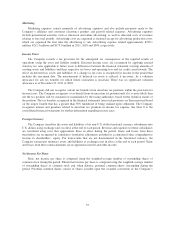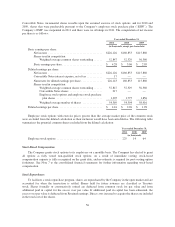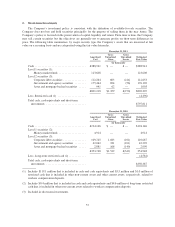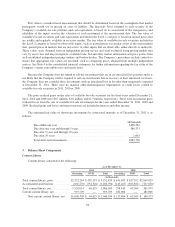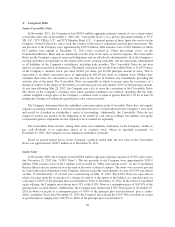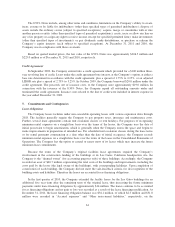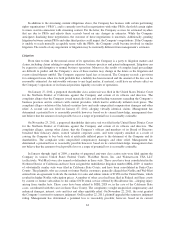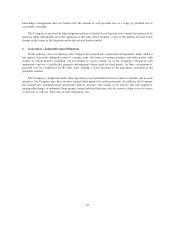NetFlix 2011 Annual Report Download - page 56
Download and view the complete annual report
Please find page 56 of the 2011 NetFlix annual report below. You can navigate through the pages in the report by either clicking on the pages listed below, or by using the keyword search tool below to find specific information within the annual report.The Company acquires DVD content for the purpose of renting such content to its subscribers and earning
subscription rental revenues, and, as such, the Company considers its direct purchase DVD library to be a
productive asset. Accordingly, the Company classifies its DVD library in “Non-current content library” on the
Consolidated Balance Sheets. The acquisition of DVD content library, net of changes in related liabilities, is
classified in the line item “Acquisition of DVD content library” within cash used in investing activities in the
Consolidated Statements of Cash Flows because the DVD content library is considered a productive asset. Other
companies in the in-home entertainment video industry classify these cash flows as operating activities. The
Company amortizes its direct purchase DVDs, less estimated salvage value, on a “sum-of-the-months”
accelerated basis over their estimated useful lives. The useful life of the new release DVDs and back-catalog
DVDs is estimated to be one year and three years, respectively. The amortization of the DVD content library is
classified in “Cost of revenue- Subscription” in the Consolidated Statements of Operations and in the line item
“Amortization of DVD content library” within net cash provided by operating activities in the Consolidated
Statements of Cash Flows. The Company also obtains DVD content through revenue sharing agreements with
studios and distributors. Revenue sharing obligations incurred based on utilization are classified in “Cost of
revenues- Subscription” in the Consolidated Statements of Operations and in the line item “Net income” within
net cash provided by operating activities in the Consolidated Statements of Cash flows. The terms of some
revenue sharing agreements obligate the Company to make a low initial payment for certain titles, representing a
minimum contractual obligation under the agreement. The low initial payment is in exchange for a commitment
to share a percentage of its subscription revenues or to pay a fee, based on utilization, for a defined period of
time. The initial payment may be in the form of an upfront non-refundable payment which is classified in content
library or in the form of a prepayment of future revenue sharing obligations which is classified as prepaid
content.
Property and Equipment
Property and equipment are carried at cost less accumulated depreciation. Depreciation is calculated using
the straight-line method over the shorter of the estimated useful lives of the respective assets, generally up to 30
years, or the lease term for leasehold improvements, if applicable. Leased buildings are capitalized and included
in property and equipment when the Company was involved in the construction funding and did not meet the
“sale-leaseback” criteria.
Impairment of Long-Lived Assets
Long-lived assets such as DVD content library, property and equipment and intangible assets subject to
depreciation and amortization are reviewed for impairment whenever events or changes in circumstances indicate
that the carrying amount of an asset group may not be recoverable. Recoverability of asset groups to be held and
used is measured by a comparison of the carrying amount of an asset group to estimated undiscounted future cash
flows expected to be generated by the asset group. If the carrying amount of an asset group exceeds its estimated
future cash flows, an impairment charge is recognized by the amount by which the carrying amount of an asset
group exceeds fair value of the asset group. There were no events or changes in circumstances that would
indicate that the carrying amount of an asset group may not be recoverable in any of the years presented. All of
the Company’s long-lived tangible assets are held in the United States.
Revenue Recognition
Subscription revenues are recognized ratably over each subscriber’s monthly subscription period. Revenues
are presented net of the taxes that are collected from customers and remitted to governmental authorities.
Deferred revenue consists of subscriptions revenues billed to subscribers that have not been recognized and gift
subscriptions that have not been redeemed.
54


